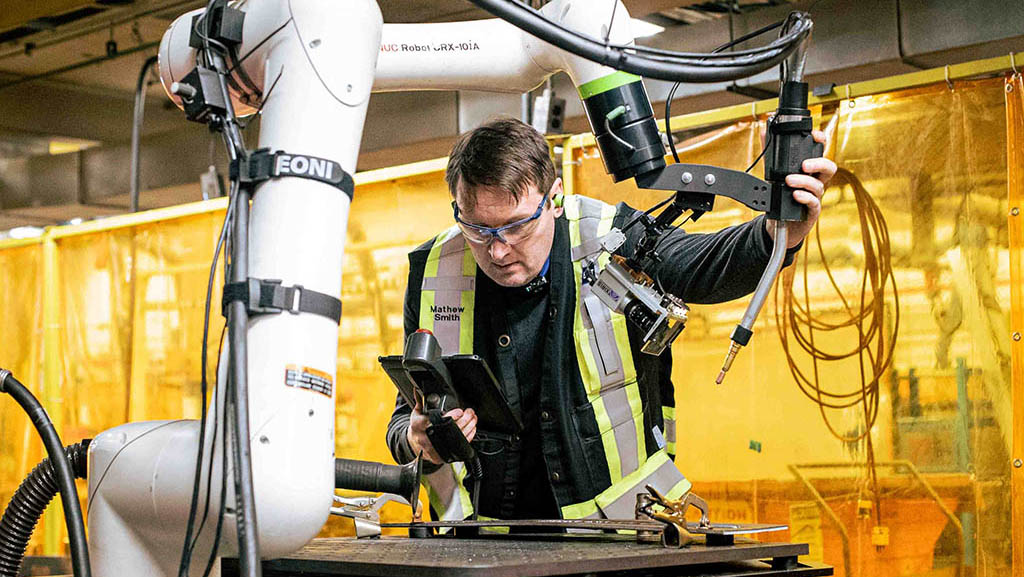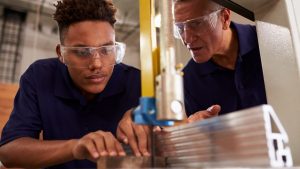We first brought you news of the British Columbia Institute of Technology’s(BCIT) use of ‘cobots’ in early July, but we wanted to explore this latest learning tool in more detail, to understand how it can benefit students and the industry on the whole.
Cobots are smaller, more nimble and cheaper versions of industrial robots designed to work around and collaborate with tradespeople.
BCIT Centre for Welding Technologies and Metallurgy director Mathew Smith said cobots, or “collaborative robots,” open up workflows that weren’t previously available to welders.
Like traditional robots, he said, a cobot follows a preset program input by a human operator but also has an array of sensors to measure its surroundings and avoid contact with people in the area.
“You can work around it without needing to worry about it running into you or it being potentially dangerous to people working around it,” he said. “With the sensors built into the cobot you can get it to run your program but if it senses a person or object or runs into a problem, it’s just going to stop, so you can safely work around it, which you just couldn’t do with traditional robots.
“That opens up different ways of interacting with a robot, because now to do the programing rather than having to rely on remotely programming it you can reach out, grab the robot and point it where you want to go,” he added.
Large-scale welding robots have historically been featured in what Smith termed “low-mix, high volume” environments such as the automotive industry.
“You’re setting up a fabrication line and one robot will do one weld on thousands and thousands of cars so you program it once and it does what you program it to do over and over again with no variability,” he said.
B.C.’s industry has rarely employed fabrication at the level necessary for robotic welding, Smith said, and the province has little in the way of training to operate robotics so often an expensive unit sits unused in a corner if an operator moves on to a new opportunity.
Cobots are not only more flexible, but easier to program, he said, which “starts to open up the idea of starting to have these types of robots on a shop floor that a welder or someone who doesn’t know how to program can use the cobot to perform welds,” Smith said.
Smith added cobots can help alleviate a continued labour shortage by working on routine welds while workers tackle more complicated tasks.
“In the world we’re in right now, where we have labour shortages for welders and it’s not forecasted to get better in the next 10 to 15 years, you can start to have small collaborative robots on the shop floor,” he said. “The learning overhead is relatively low in implementing them and they can start to do simpler tasks, freeing up the welder to do more skilled tasks.”
Welding students must still learn the basics by hand before approaching a cobot, Smith said. Those who work within the centre’s cobot-enabled shops already have a background in the welding industry or a welding ticket.
“Their knowledge of welding makes it extremely easy for them to pick up and use this. They understand gun angles and wire feeds and all the other parameters that go into ensuring a good weld,” he said.
Cobots and other automation will not replace human workers, he added.
“You can’t get someone who has never welded before, get them to a point where they can just use this thing and we can replace skilled labourers. That won’t work but what does work really well is if someone understands welding, is trained as a welder and they understand what the cobot can and can’t do, what’s a simple weld and what requires more interaction,” he said.
“It enhances your ability to work, but it doesn’t replace a need to understand welding.”
For more on what cobots can do, listen to The Construction Record Podcast here.






Recent Comments
comments for this post are closed